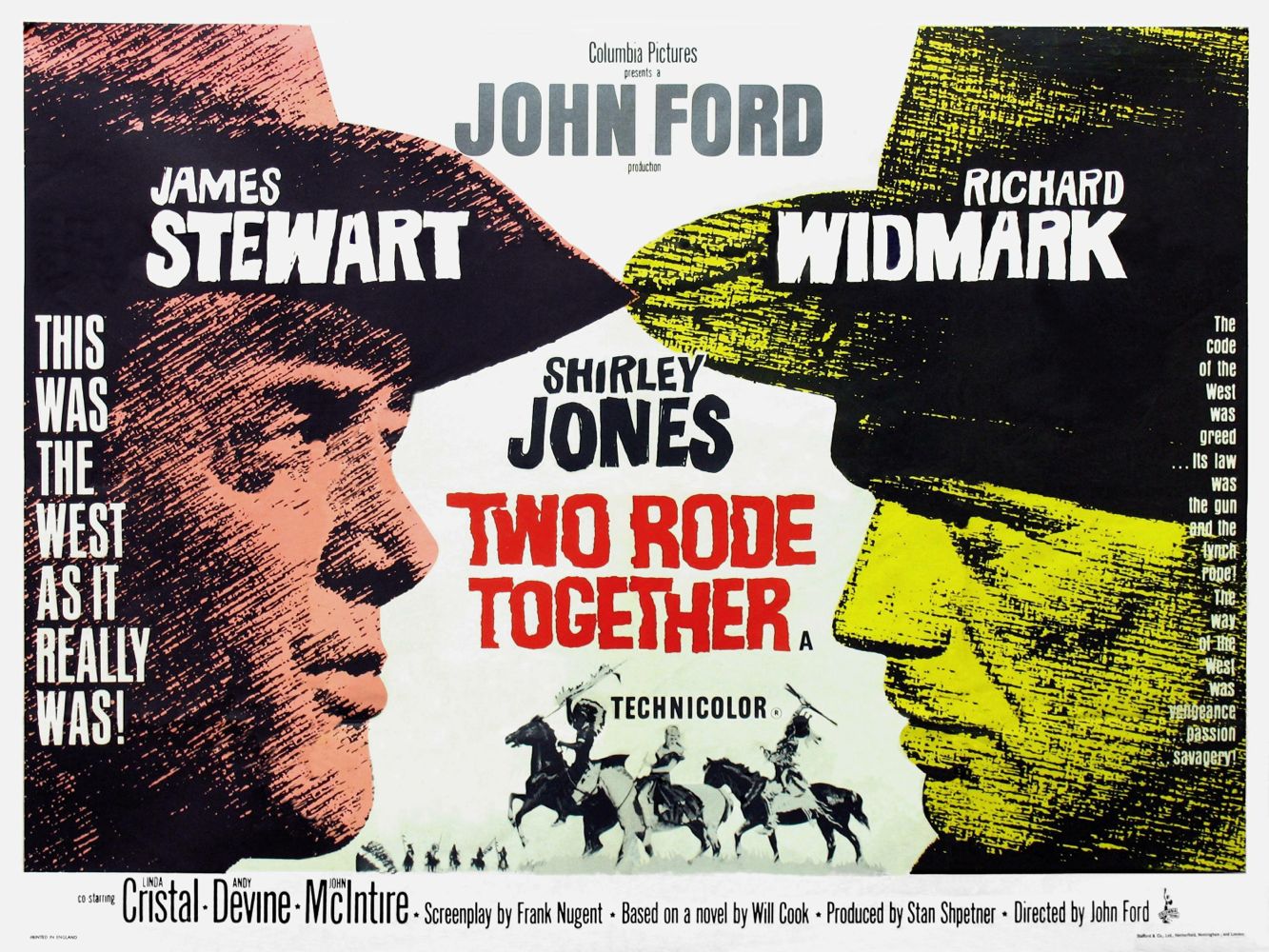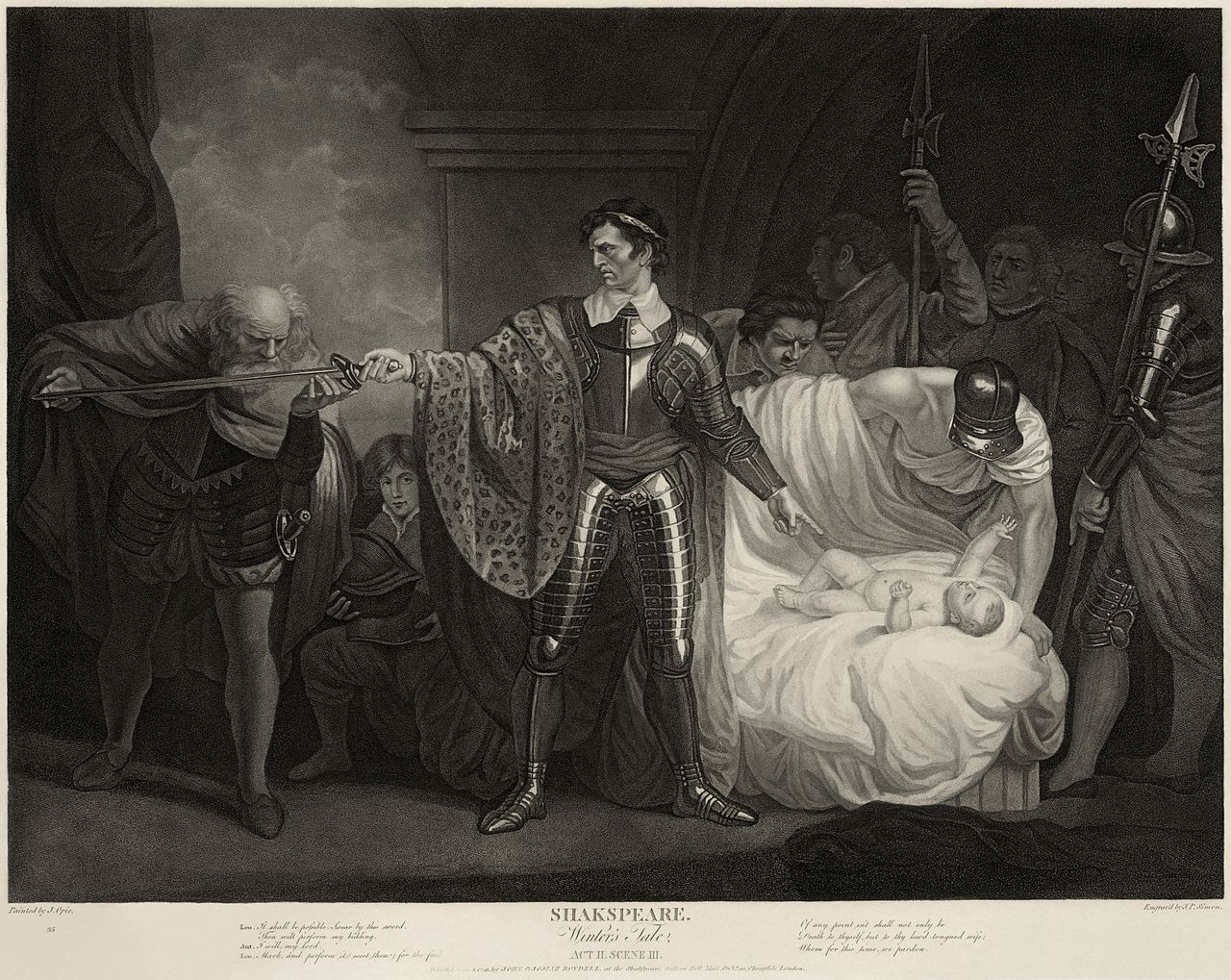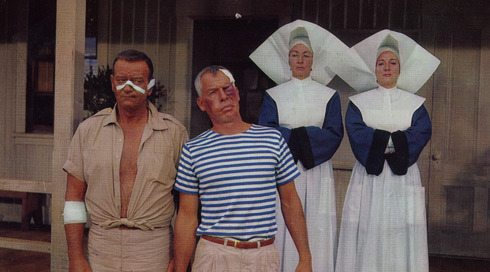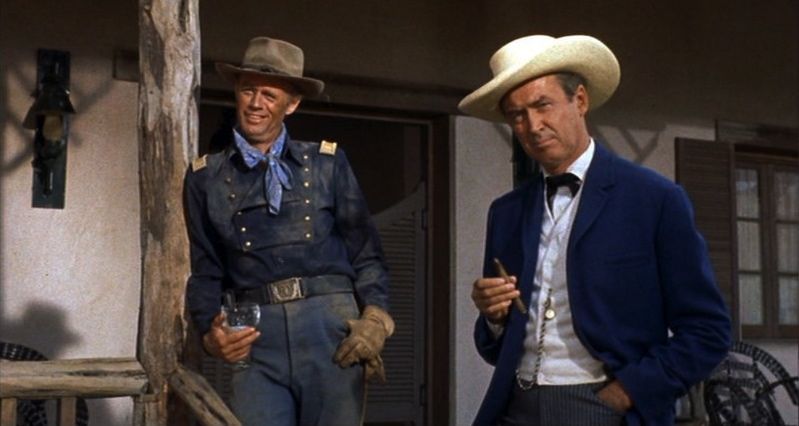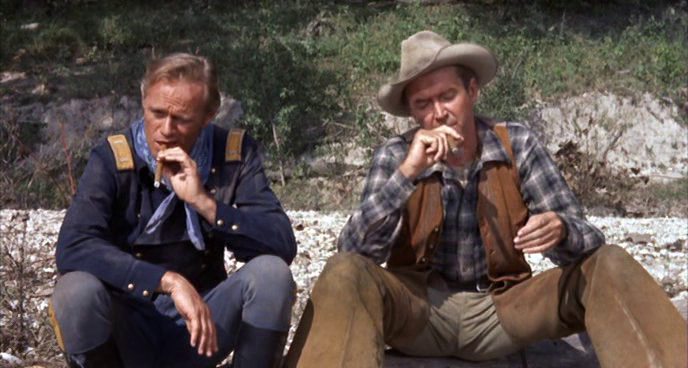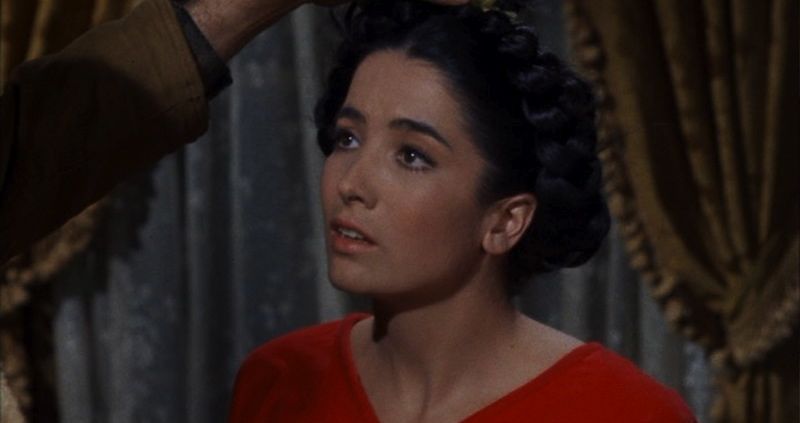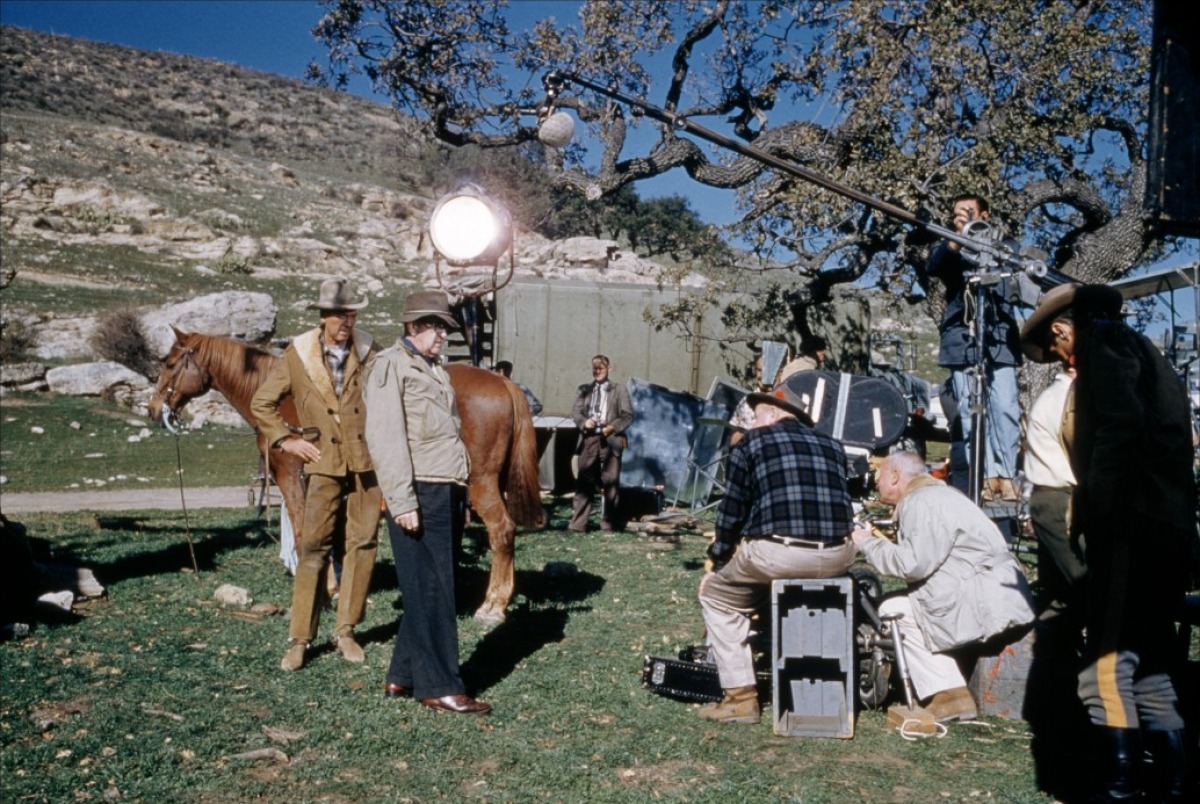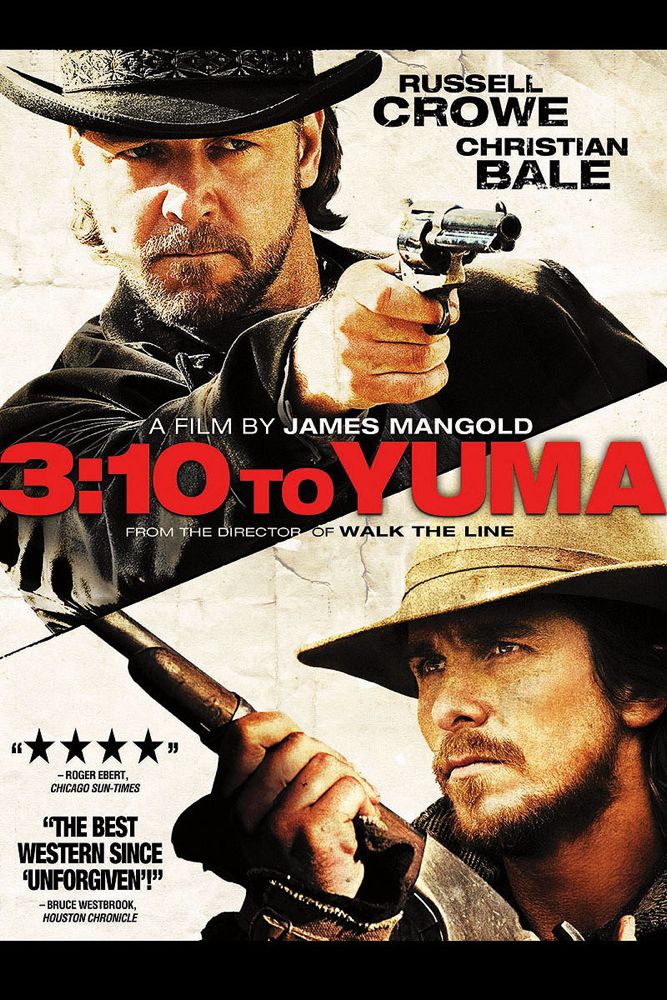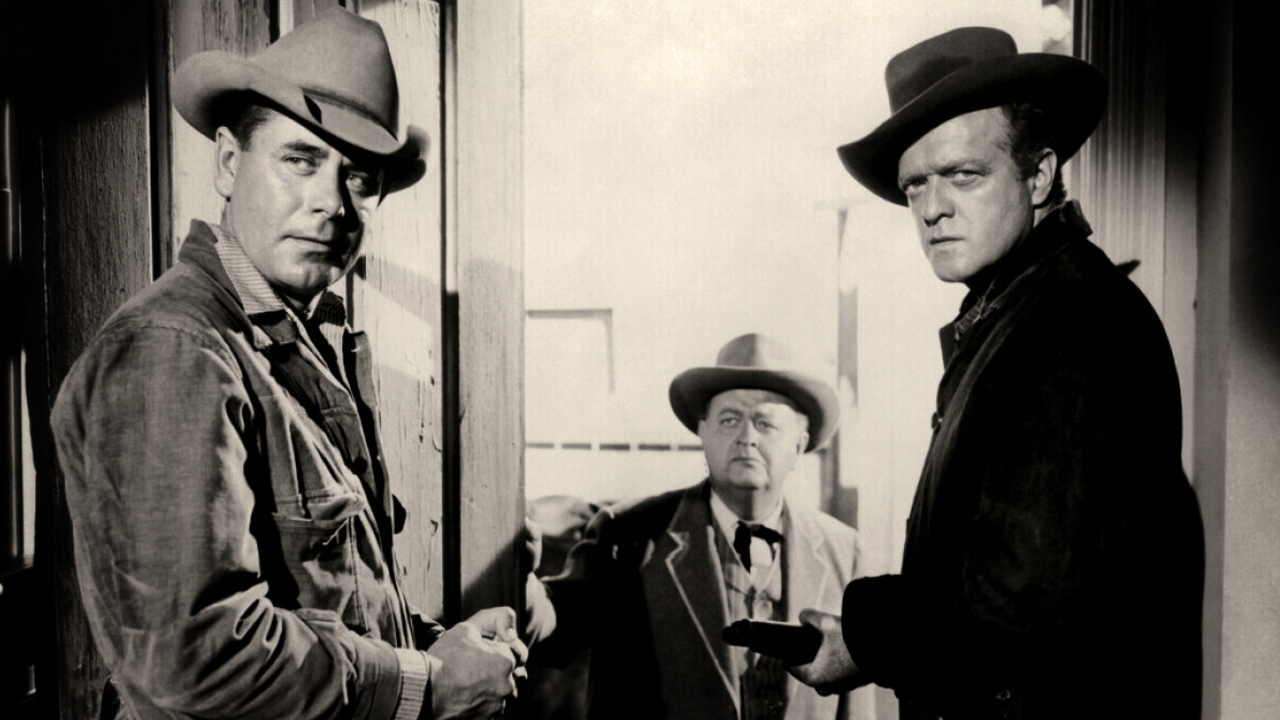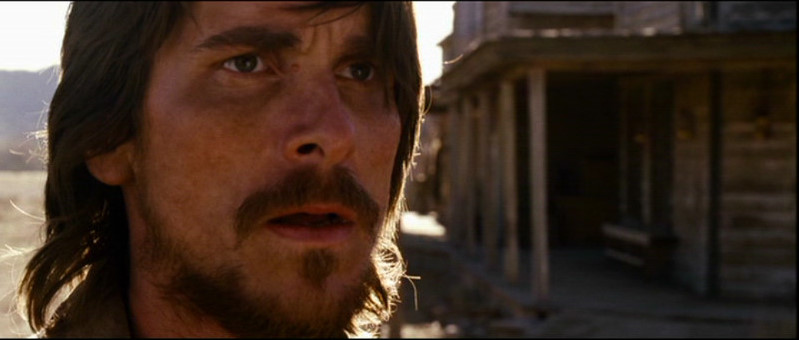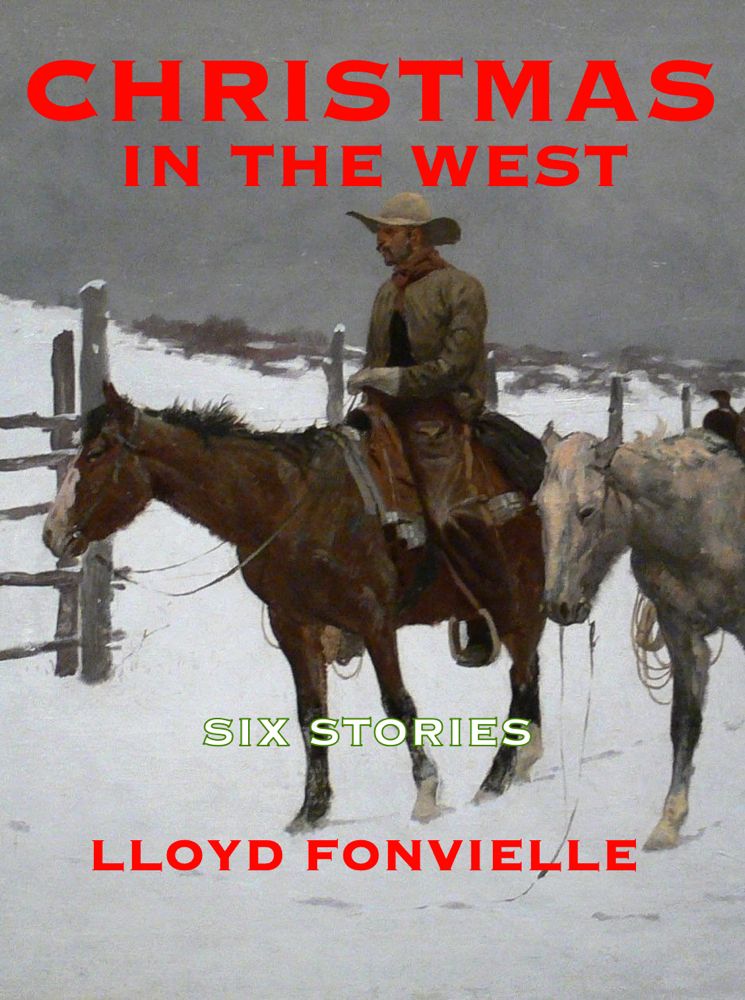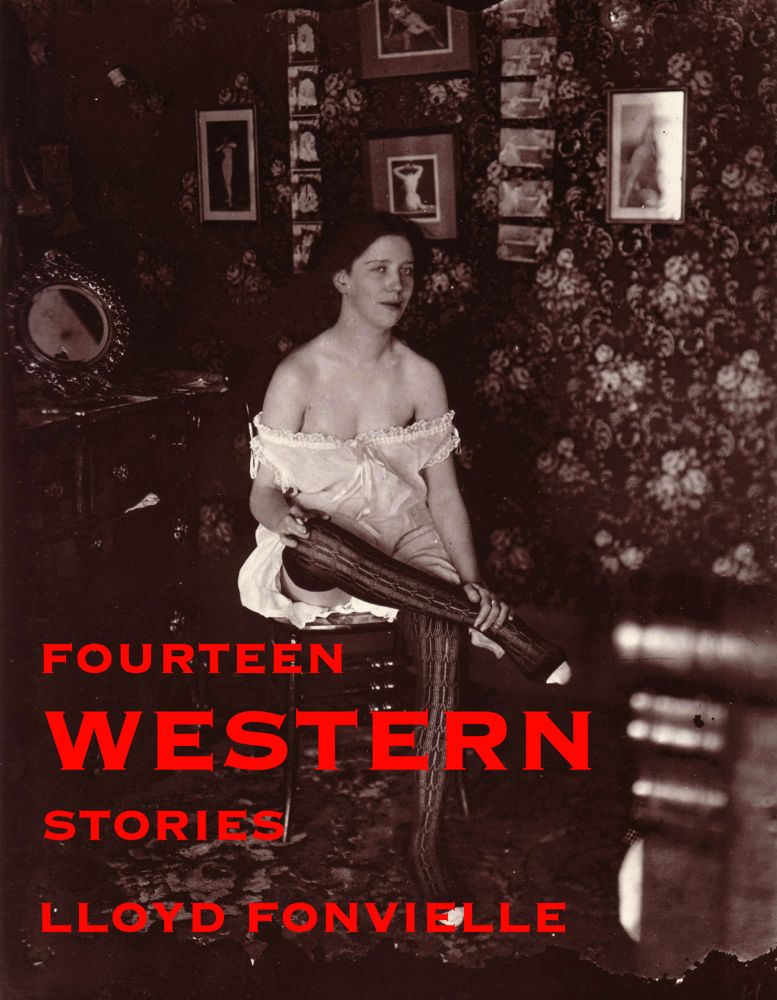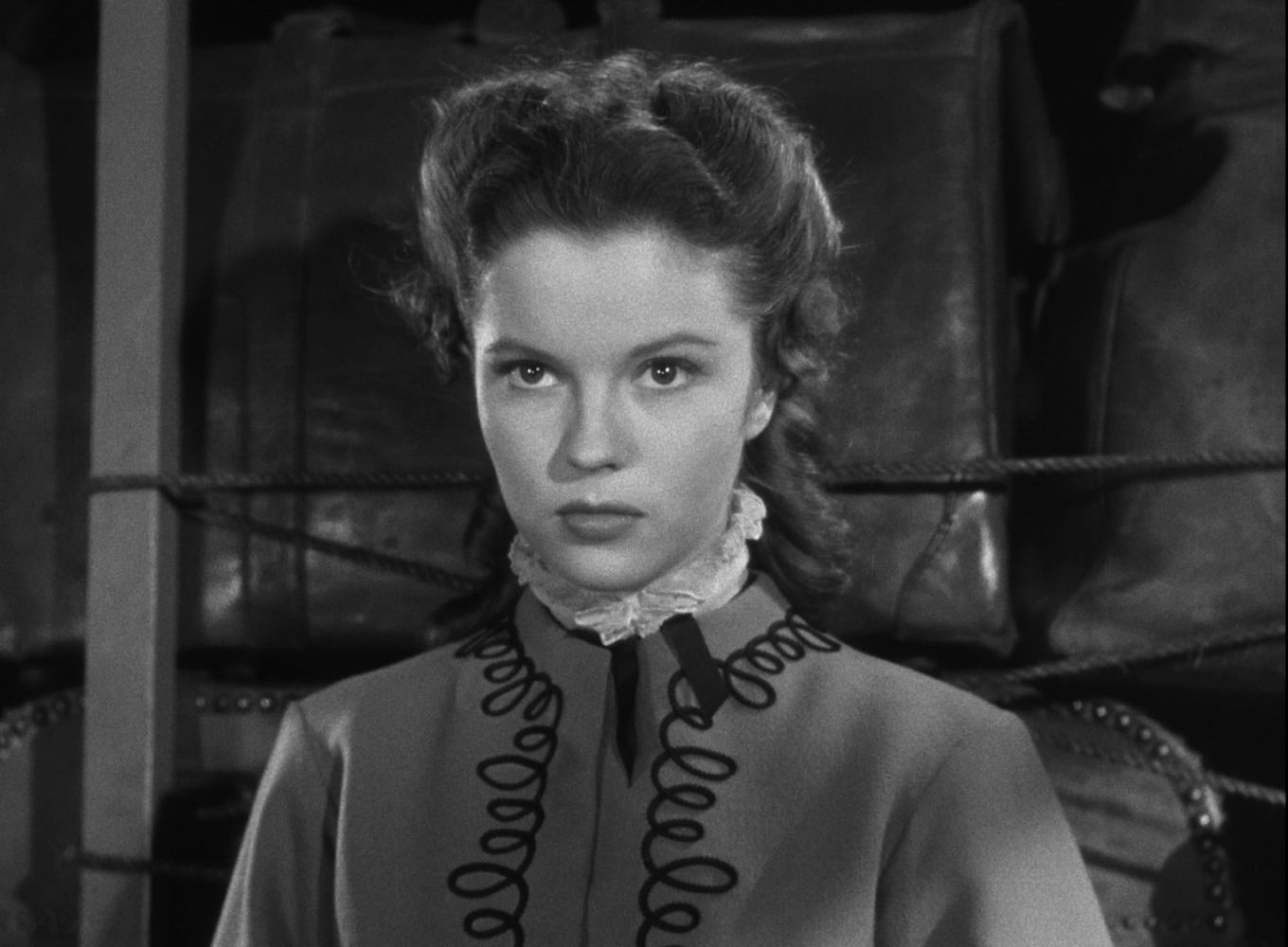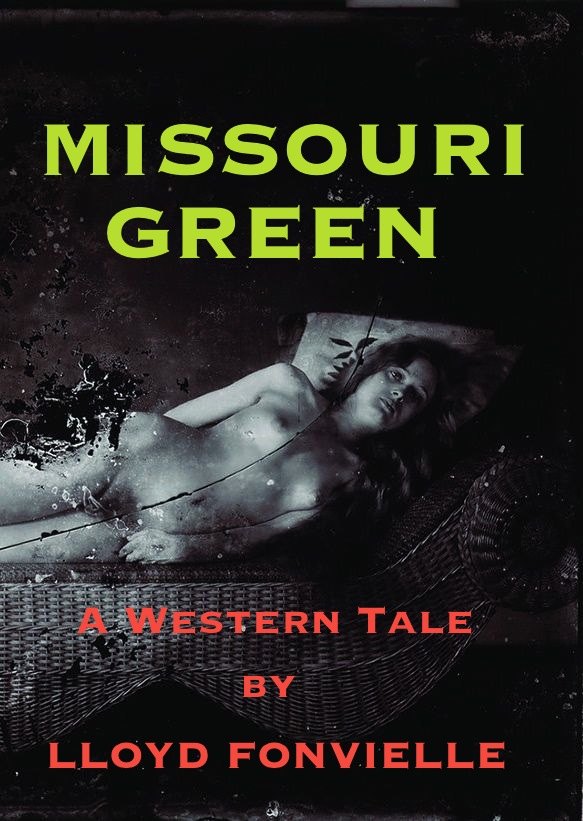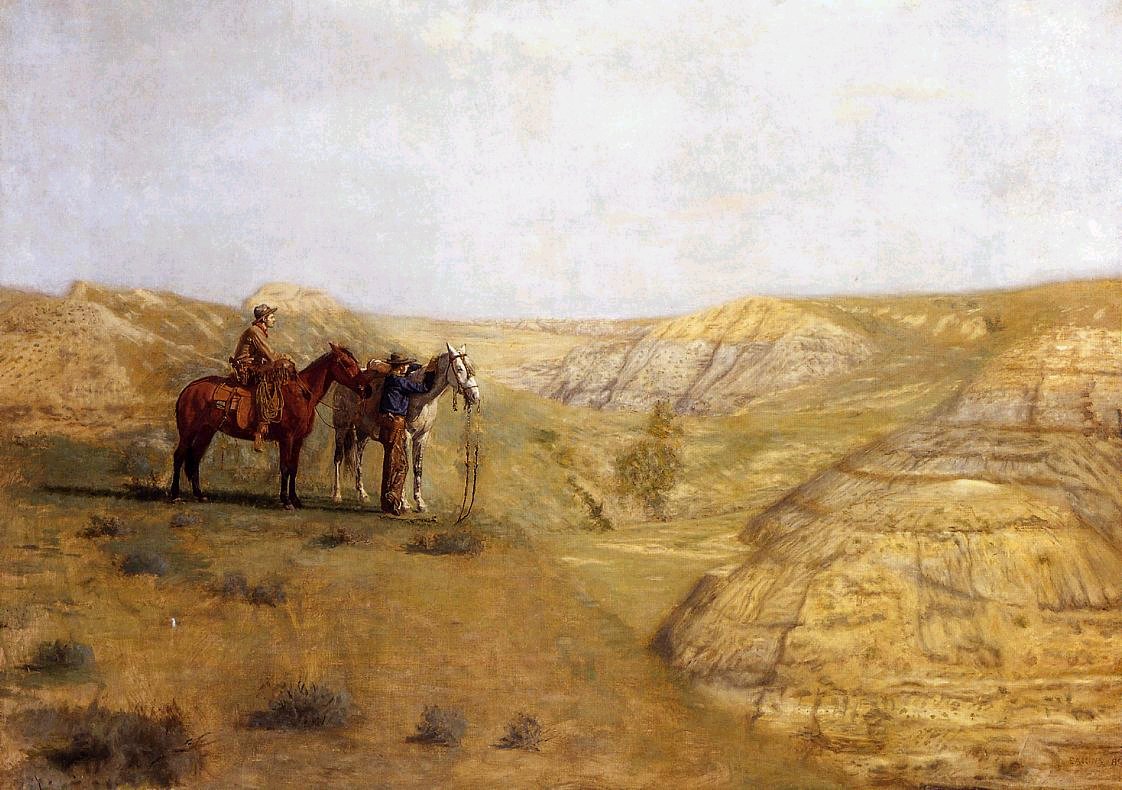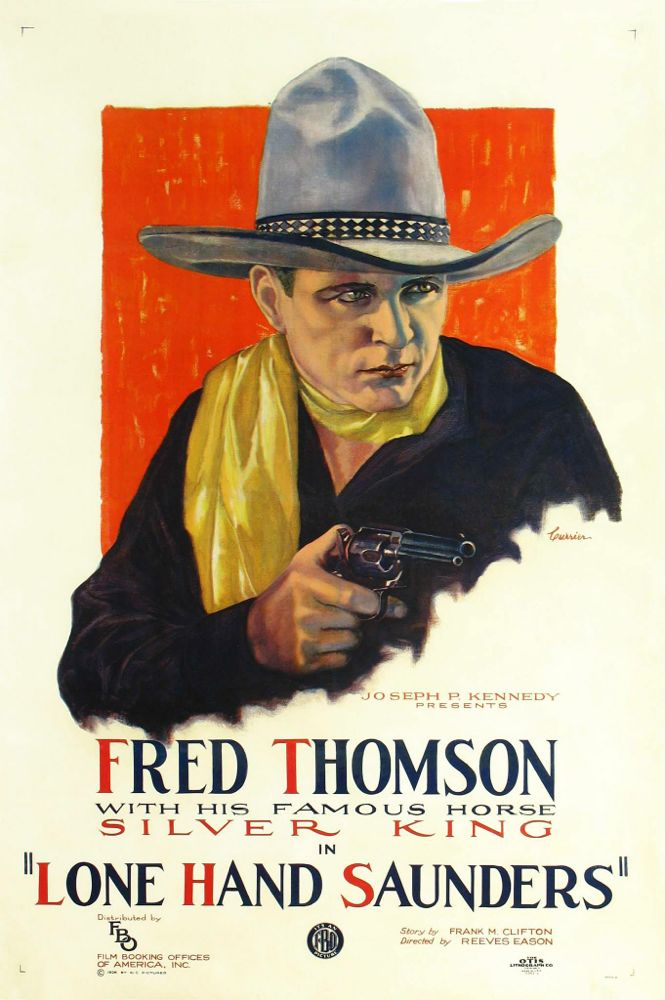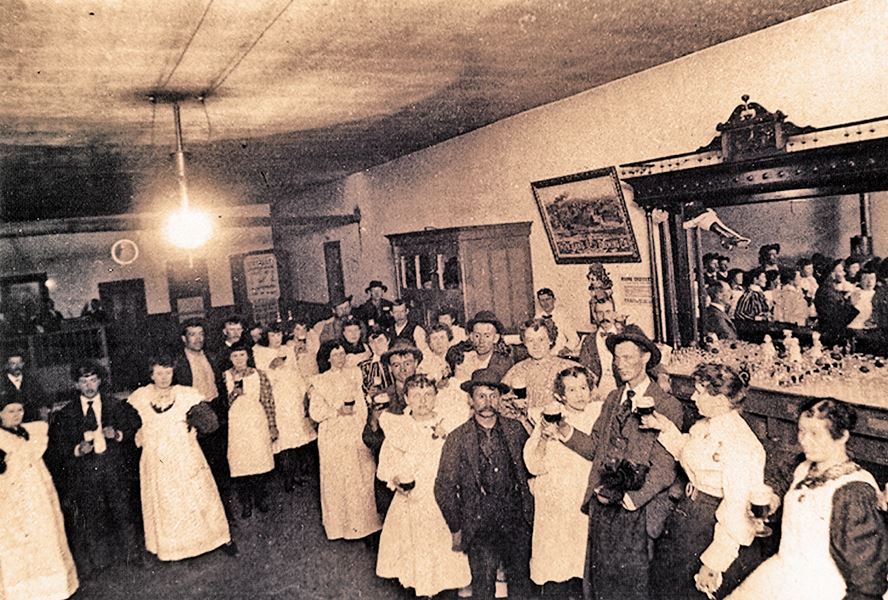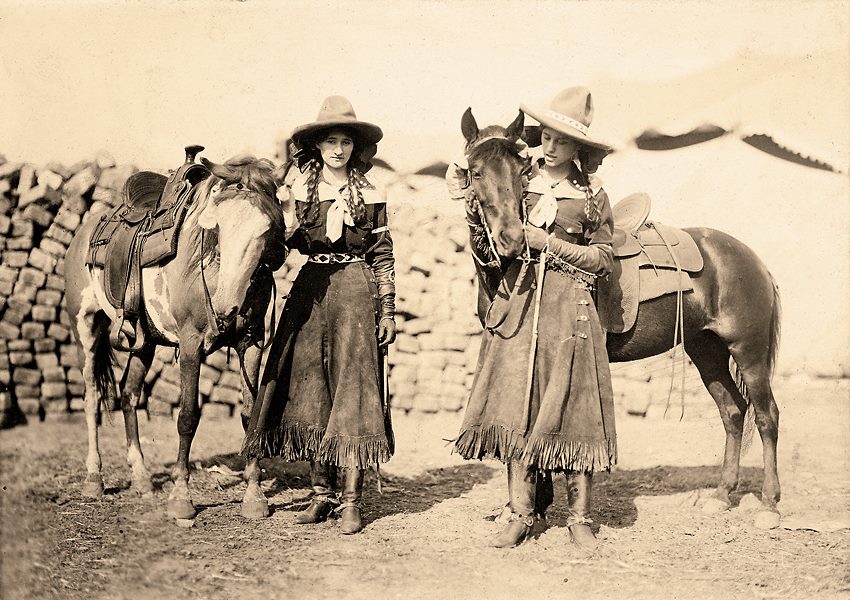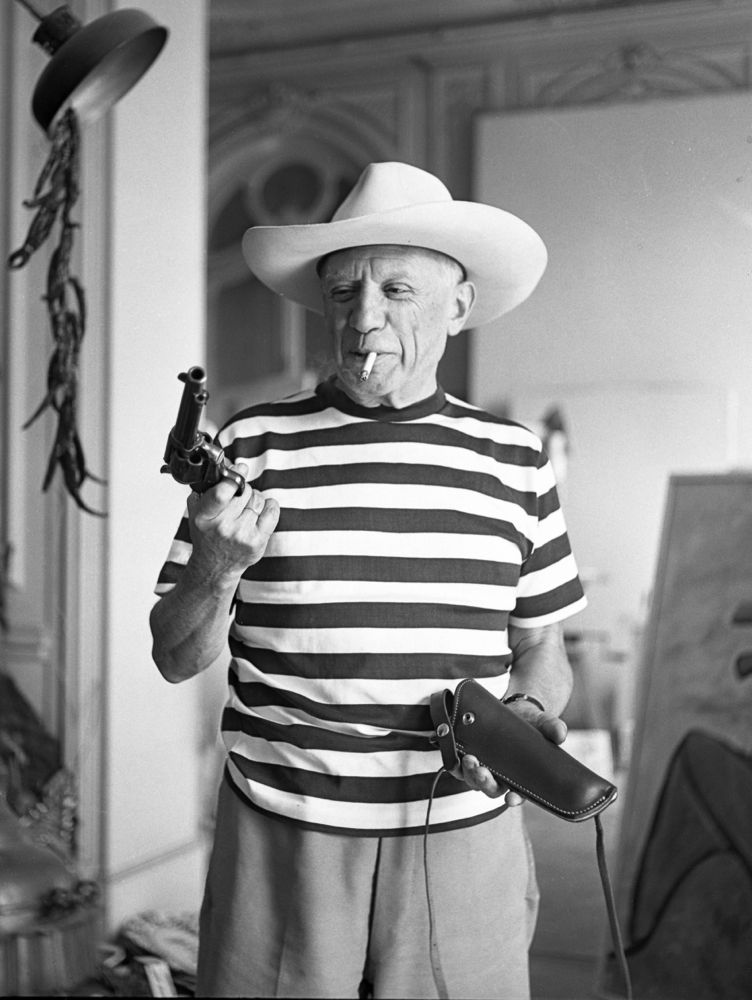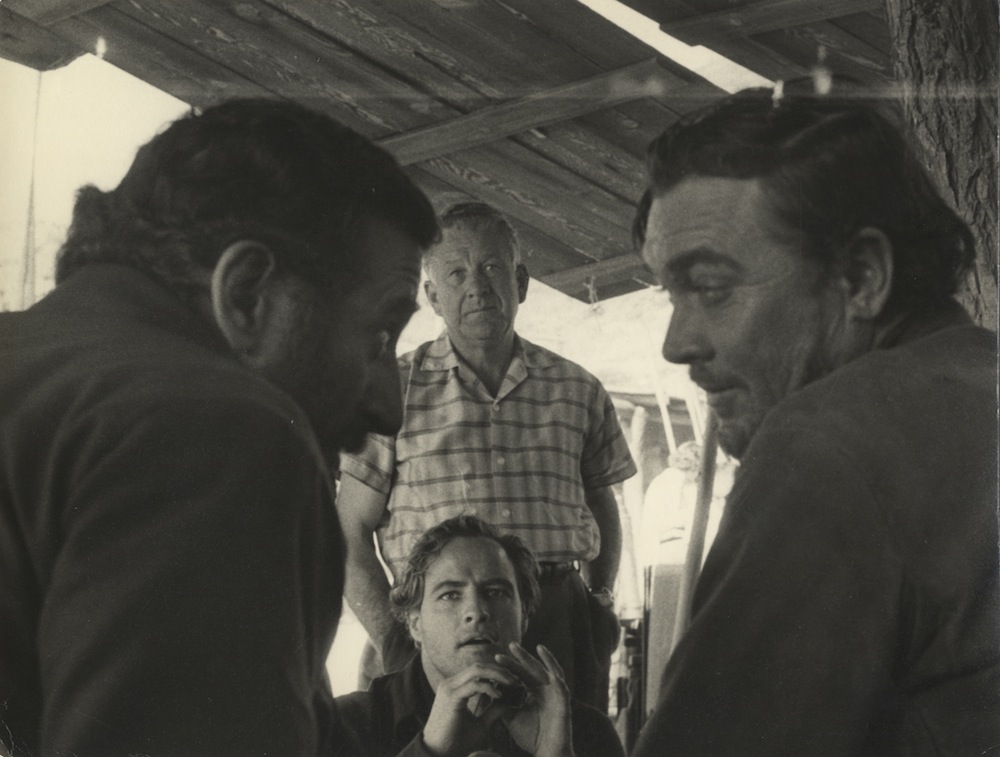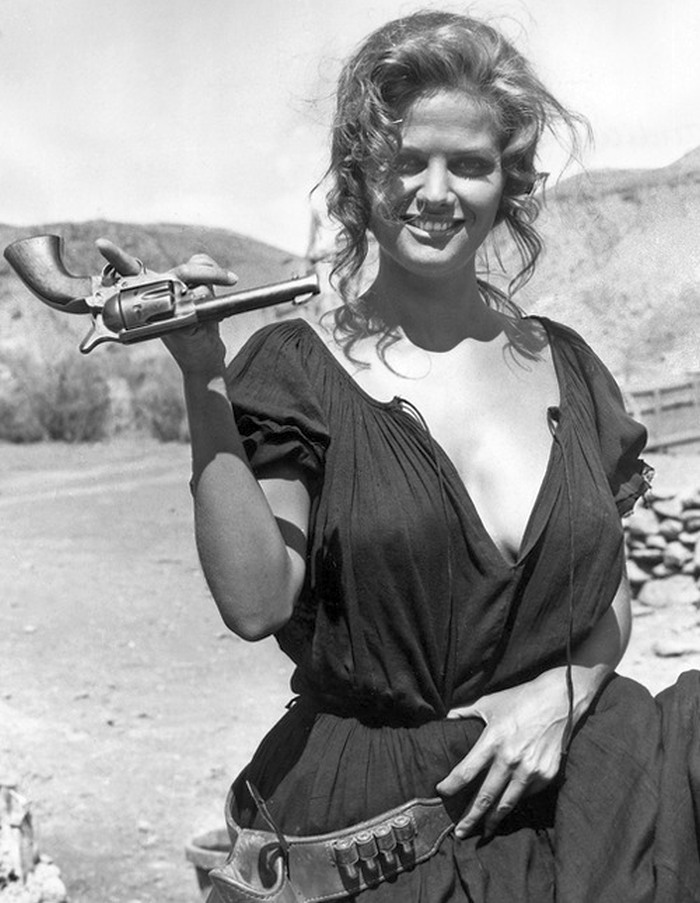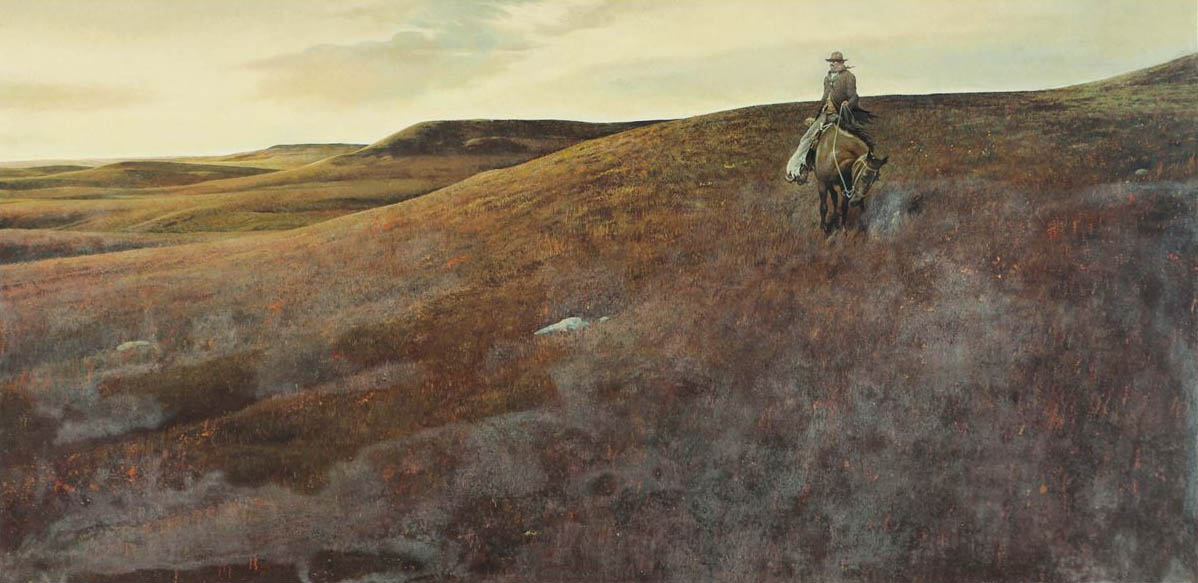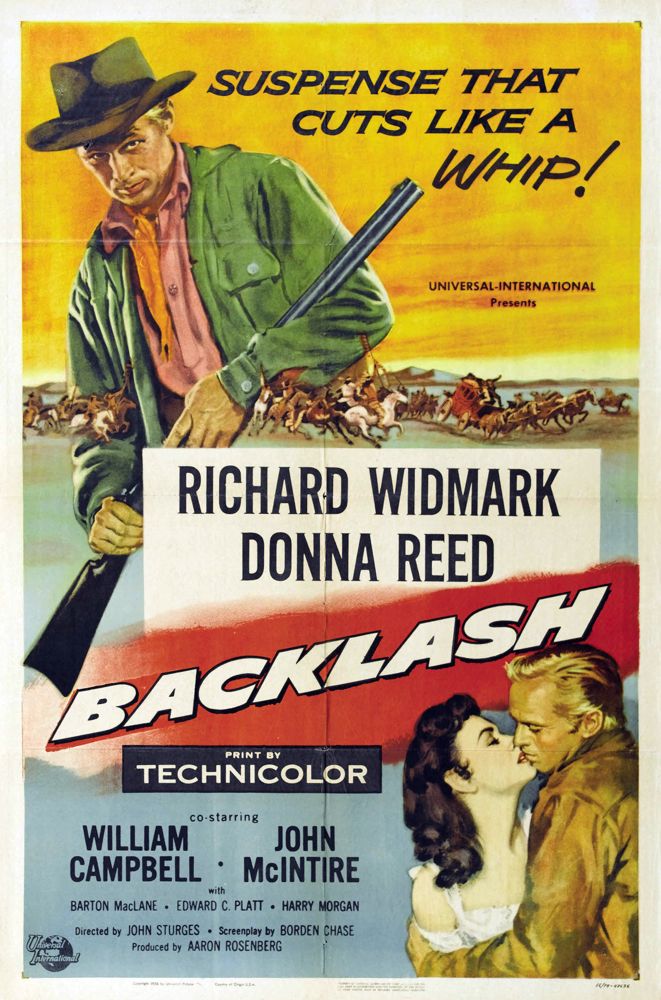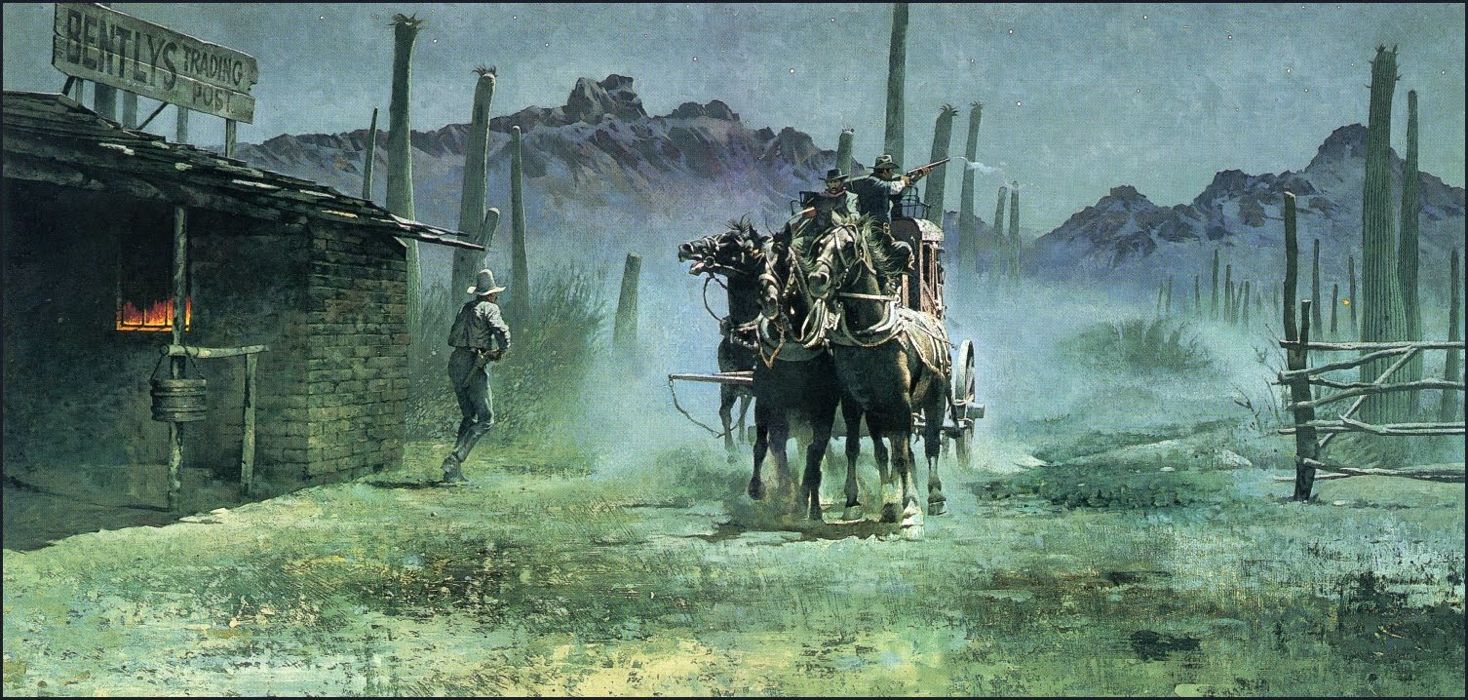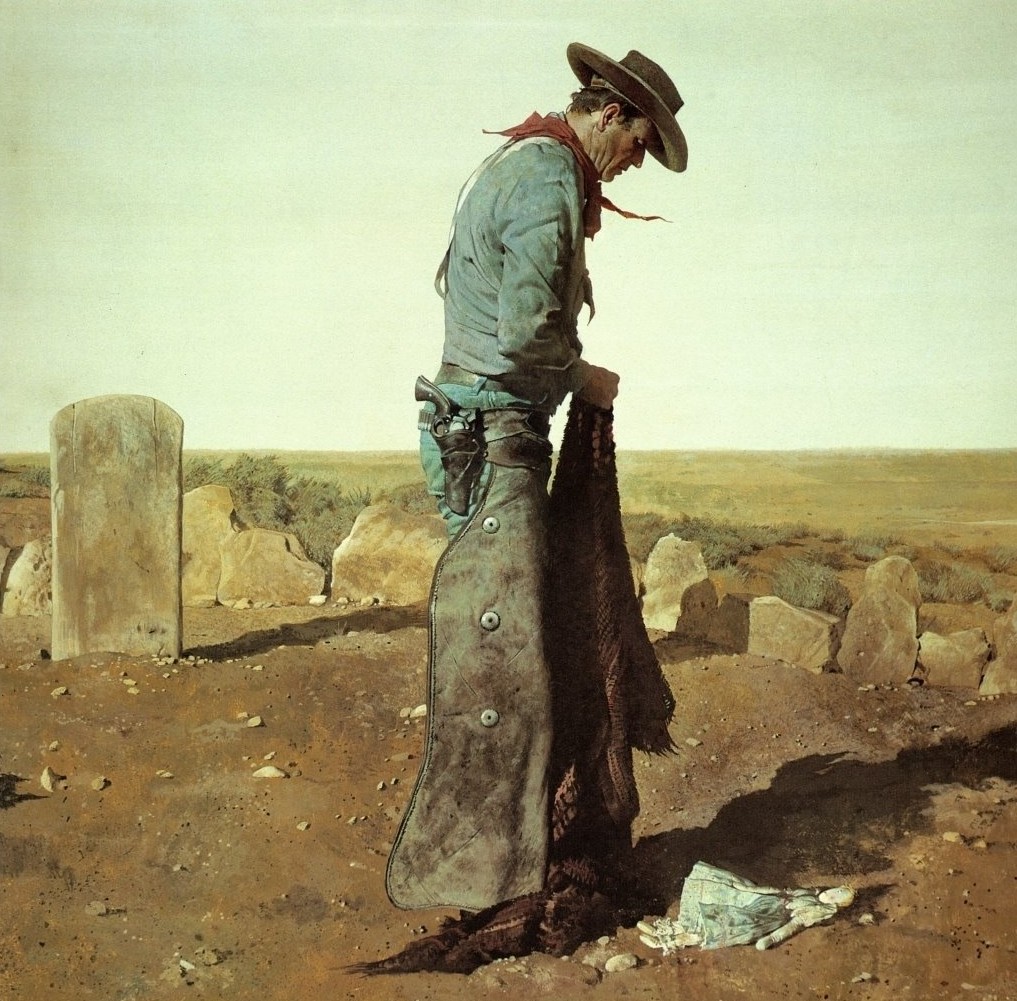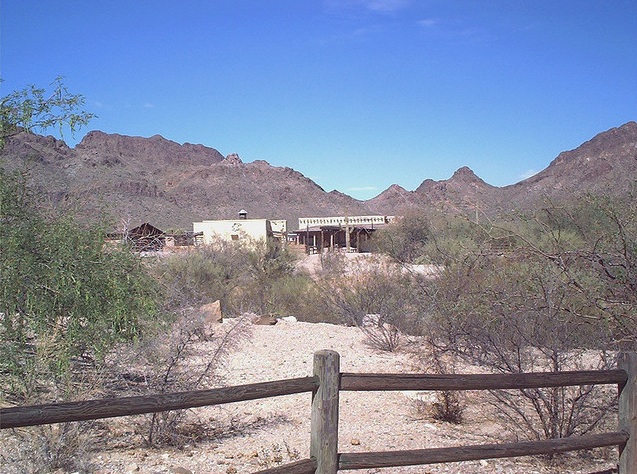Dramatic geniuses can get a bit eccentric towards the end of their careers. In his late romances, Shakespeare pretty much abandoned plausibility and consistency of tone — he just threw together incidents and scenes and characters and language that interested him and cobbled them together this way or that. He basically said “fuck you” to the “well-made play” and pleased himself.
The results were both magical and unsettling. The same can be said of many of John Ford’s late-career movies. They’re not tightly constructed, they veer around drunkenly between themes and dramatic arcs, with the director concentrating on the stuff that interested him, whether it had a clear structural function or not, and fecklessly tossing off the other stuff.
This is true of Donavan’s Reef (above) and Cheyenne Autumn — both of which are uneven as dramatic works but have passages of great beauty, as powerful and moving as any in Ford’s work.
It’s true also of Two Rode Together, above, a Ford film from 1961. The film starts off at a stately pace, apparently setting up a buddy adventure between the characters played by its two stars, Jimmy Stewart and Richard Widmark. But Ford quickly loses interest in the adventure. He pauses to let the two great actors banter with each other, in leisurely and absolutely riveting exchanges. He makes breathtakingly beautiful shots of horses and wagons moving across the landscape and neglects the visual possibilities in scenes that have dramatic weight in the story.
The adventure sort of fizzles out by the end, but by then Ford has switched his interest to the sexual and racial dynamics in the romantic subplots his leads get entangled in.
It’s like listening to a great storyteller drinking and talking by the fire, getting sloshed and losing the thread of the tale he started out to tell, but still captivating you with his voice and with the brilliance of his digressions.
The result is a perplexing film that is also great and immensely pleasurable — like Shakespeare’s The Winter’s Tale. You know that wherever the tale is going, the journey is going to be worth it — maybe not in the ways you expected but . . . somehow.
Click on the images to enlarge or isolate.

